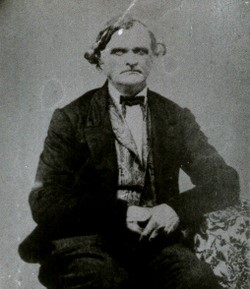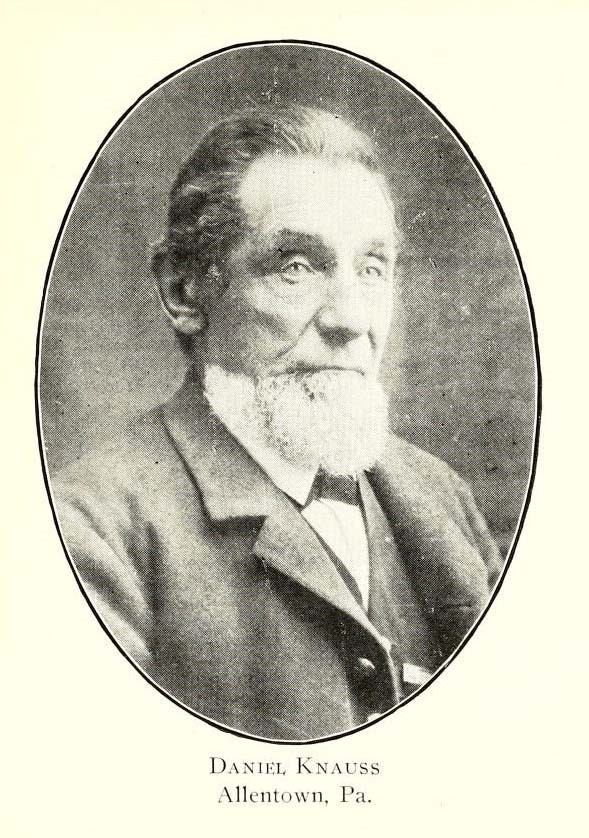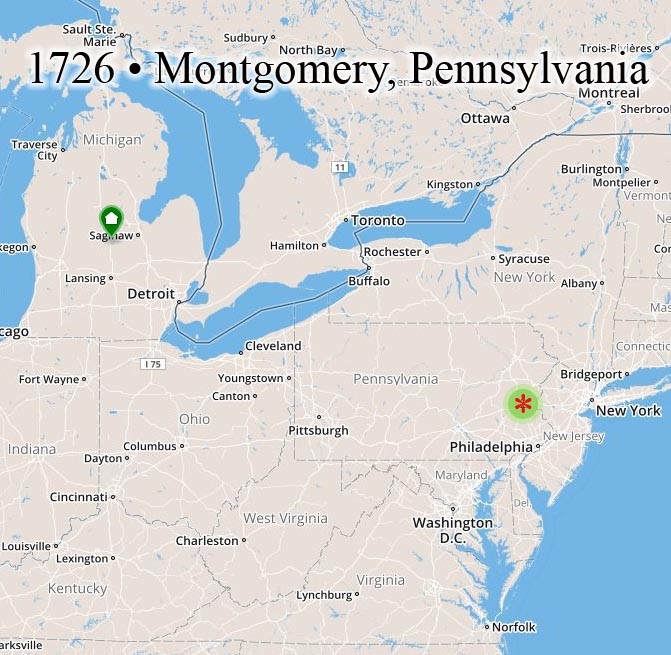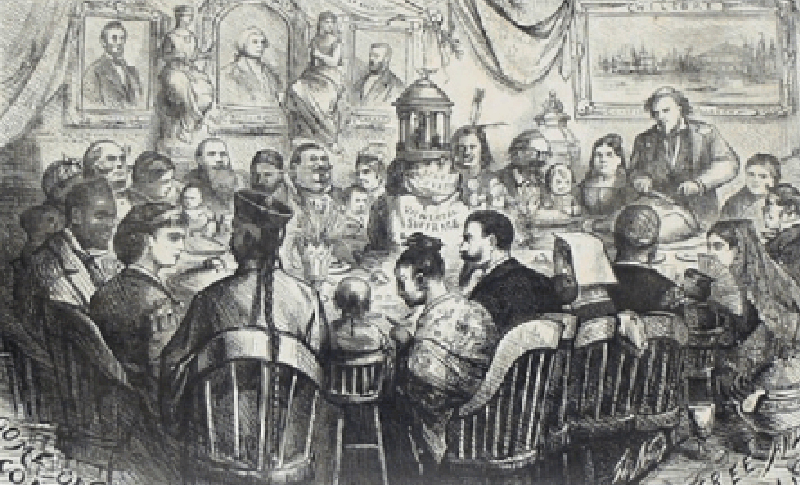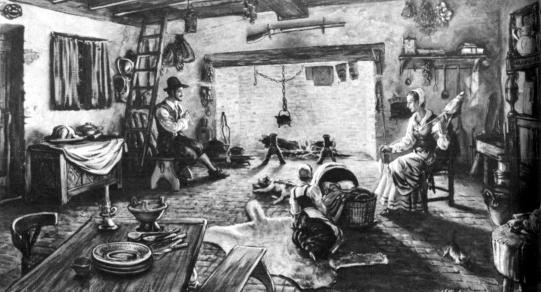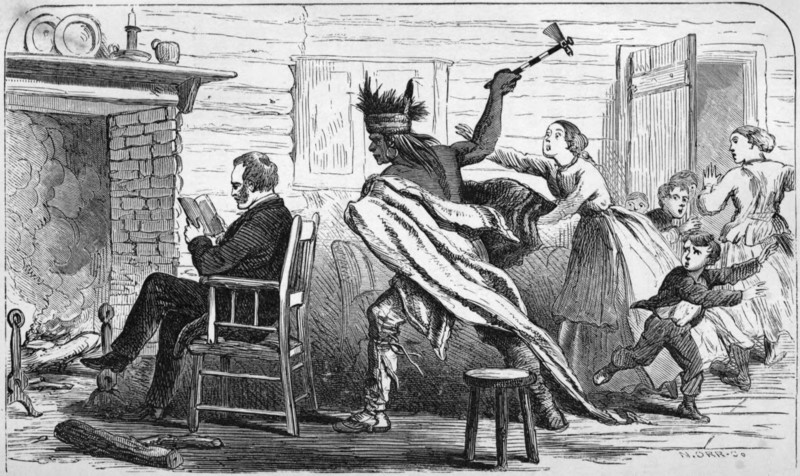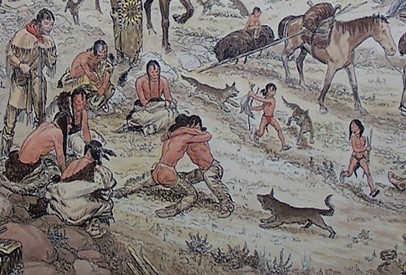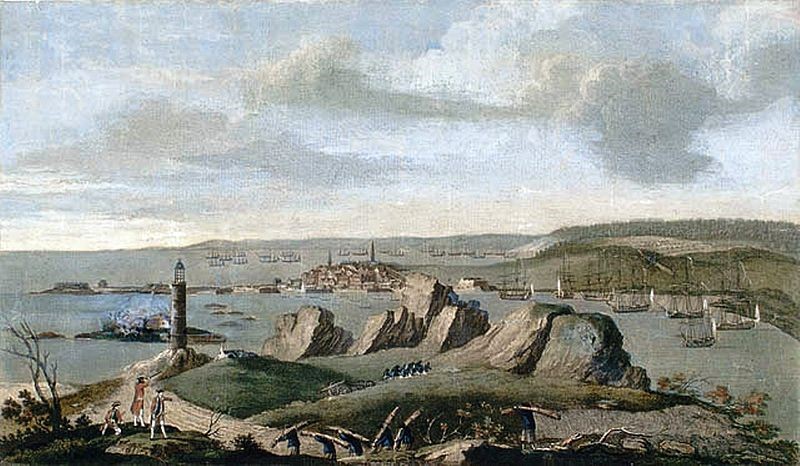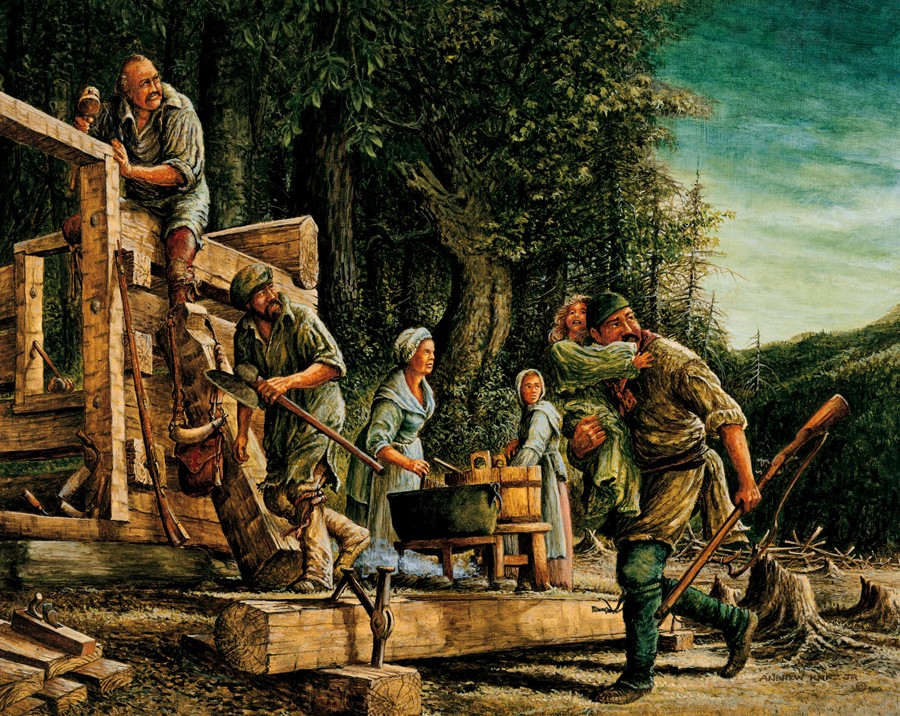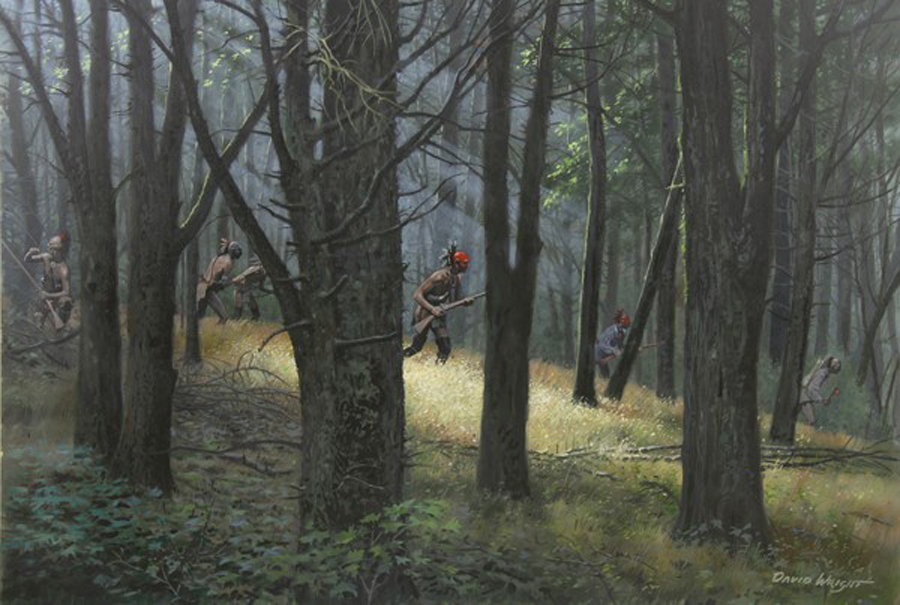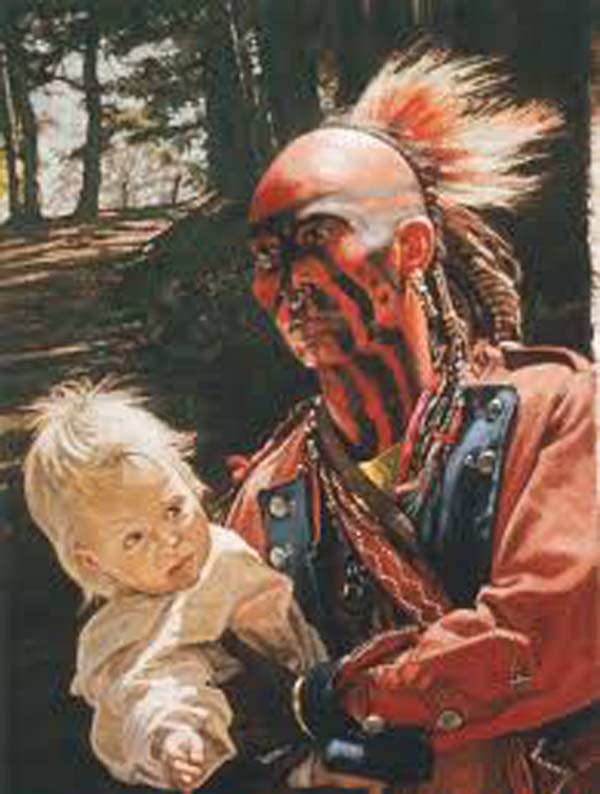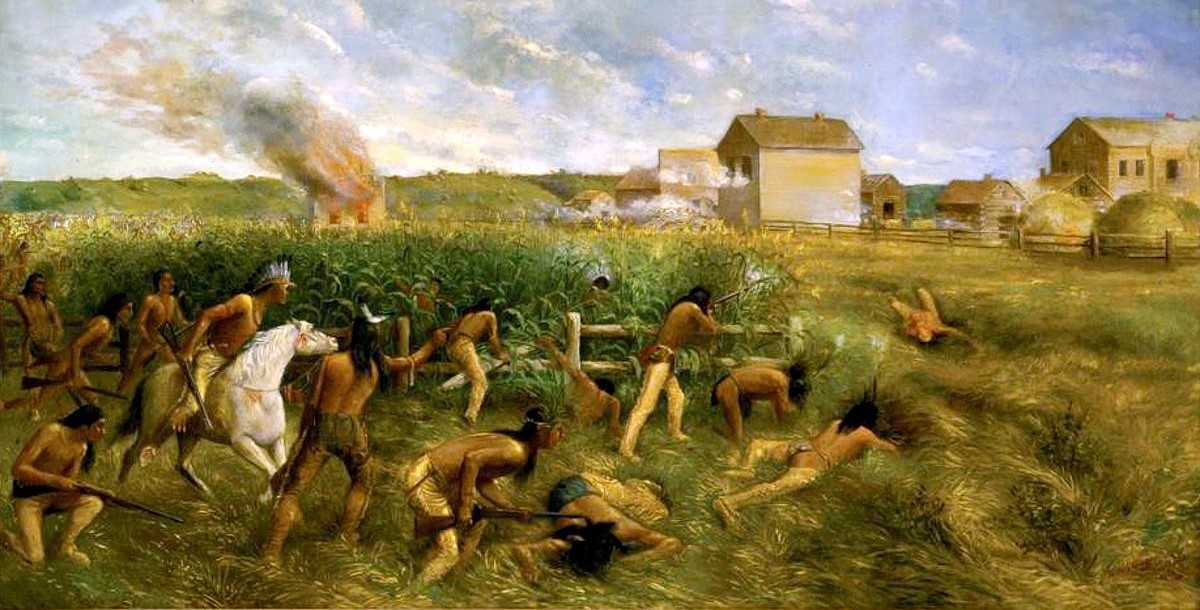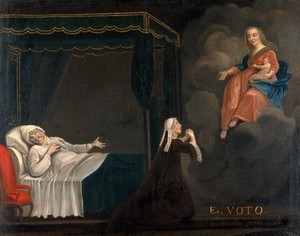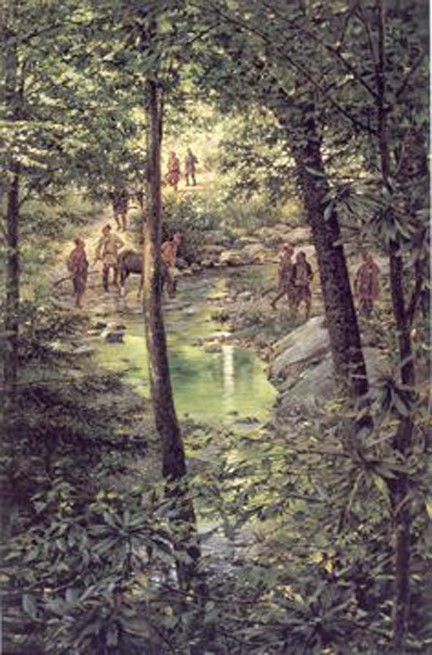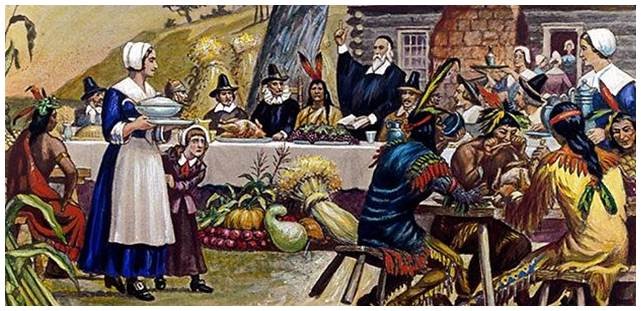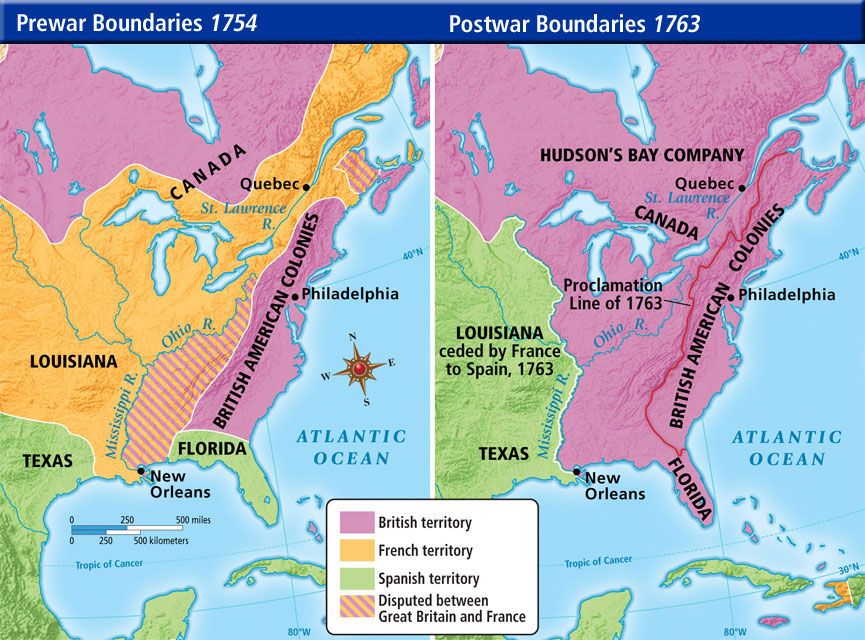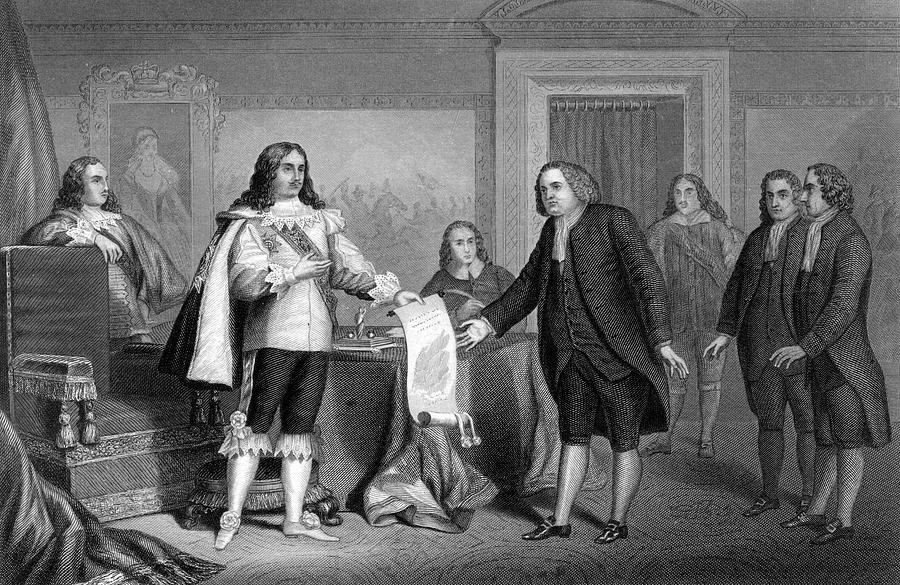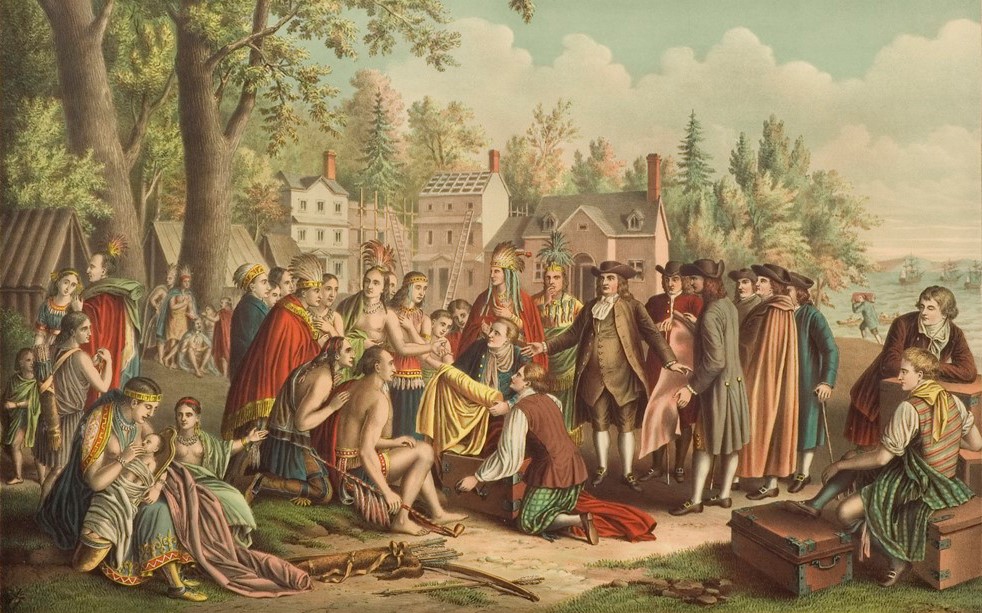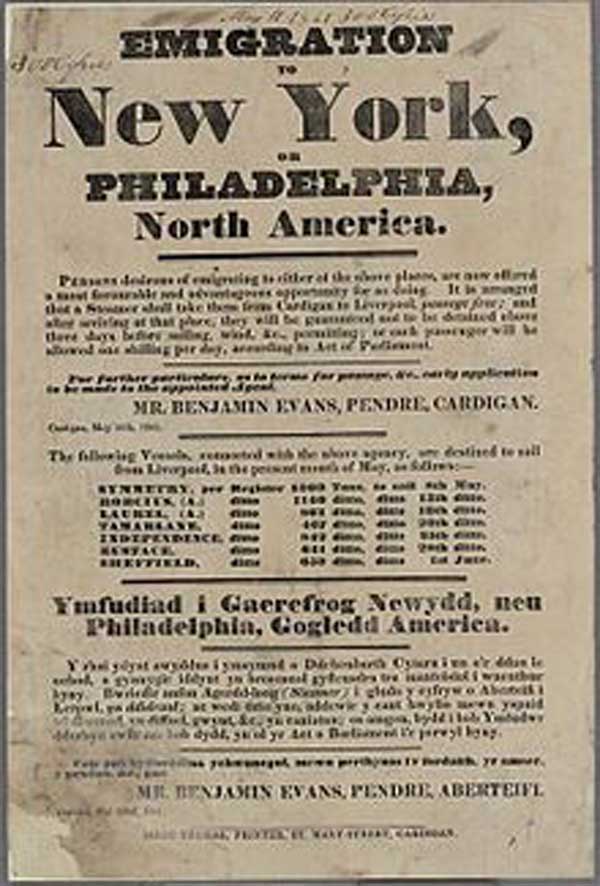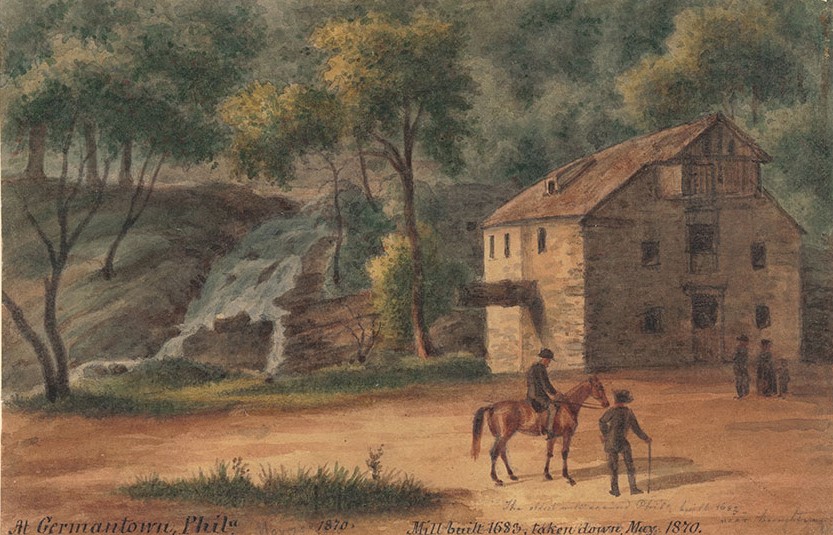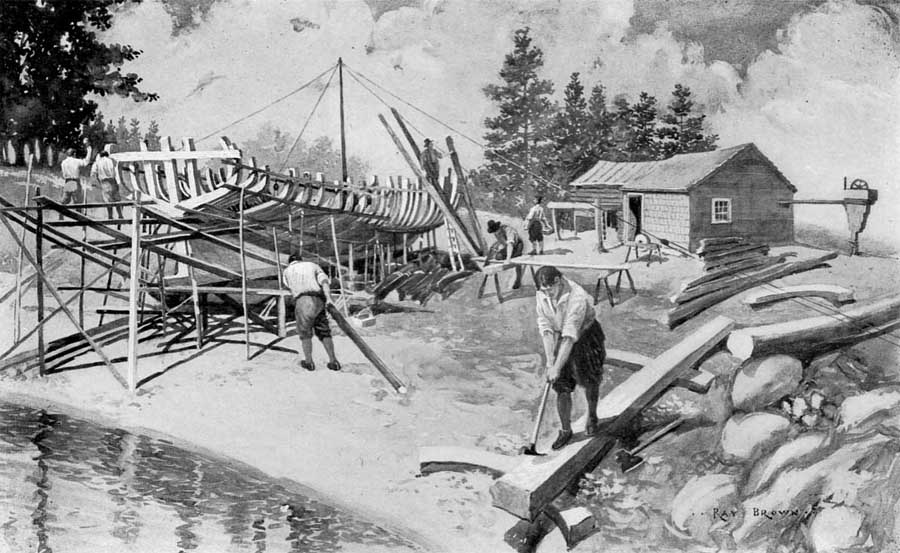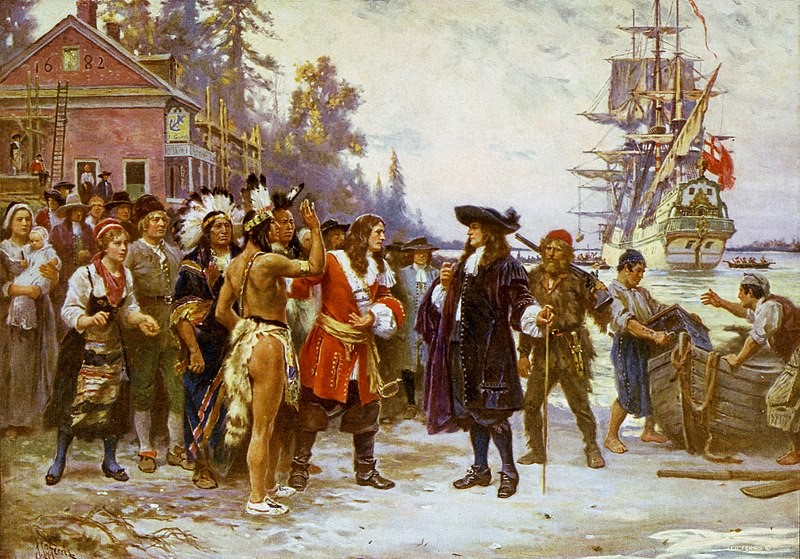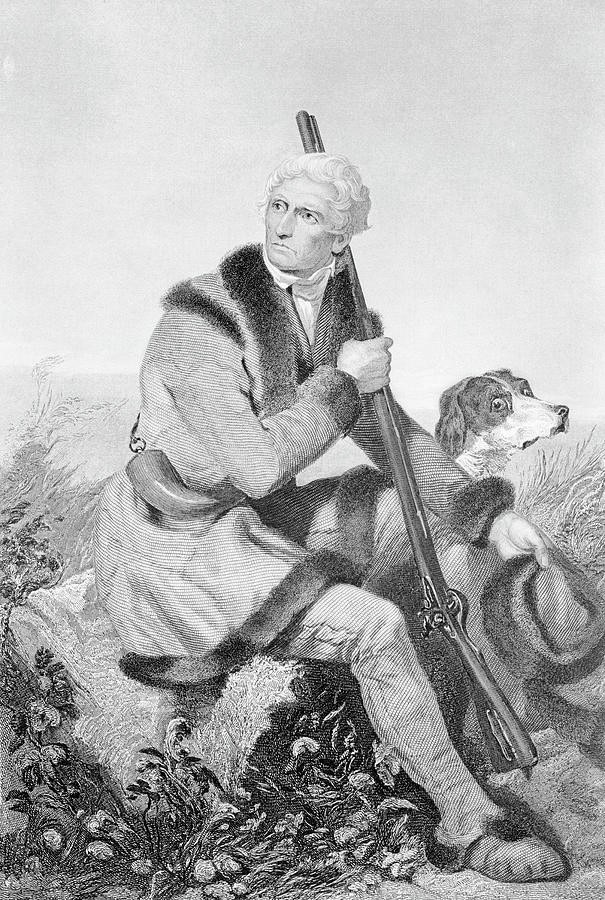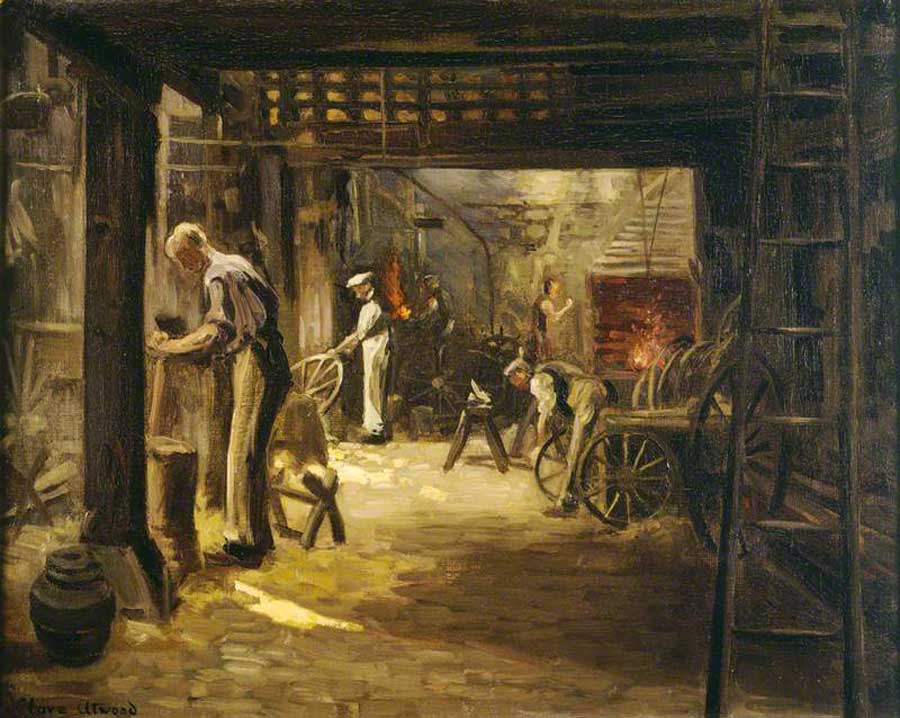Ludwig and Anna Knauss had several children together. Among them were two sons, Sabastian Heinrich Knauss, born in the old country, and his brother Daniel Knauss (1728 TO 1792, 7TH GREAT-UNCLE), born in 1726 in Montgomery, Pennsylvania, when Sebastian Heinrich was 12 years old.
Daniel Knauss was born here
Even though a few years separated them, these boys were very close. Later in life, when they got married, they lived side by side on some of their father Ludwig’s land and started their own family. All the children were inseparable between the two homes, and both houses celebrated the holidays together. Each summer, they held a family reunion, and other relatives of both sides of the family came to enjoy each other’s company and eat a great meal together.
A great meal together
At each family get-togethers, they all took part in the communion service before eating their meal. The glass communion cup that was given to Peter Lee Knauss by Elisabeth Luther had long since disappeared. Whether after generations, its value had faded or over time, it became chipped, and someone just threw it away. The cup from the Knauss family’s first, Lord’s Supper, was no longer with the family, but the communion service was.
From the time they were young boys, Sabastian and Daniel were always eager to break the bread and pass the cup while celebrating the Lord’s last supper. Ludwig taught his sons to love serving the Lord by how he lived his day-to-day life. None of these men were pure saints, but they were servants eager to serve the Lord. So many essential things were hard to come by that it was easy for both boys to count their personal blessings. Their families came first in all matters. The stories about Jesus were no longer told around a campfire with the local storyteller. But now, they were taught from the Bible next to the fireplace in their log cabin. The light from the fire brought to life the stories and huddled together; they kept warm.
Bible stories by the fireplace
Family values that bonded together with each member, young and old, were necessary just to survive in this new land. Native Americans that had lost their homeland to the new settlers were still an ever-present danger. And they could threaten families living alone at any time. Many children died very young or did not survive childbirth without modern medical care, and this was a high risk to the mothers. So, families stayed together internally, and groups of families bonded to form small communities that all depended upon each other.
The games children played – Colonial times
One day when Sebastian was at the trading post resupplying his needs, he heard the latest news. A young man had been found wandering alone and scared in the wilderness. He was believed to be the son of a family that had moved to the frontier settlement. The Indians massacred his parents, and he had been carried into captivity.
Indian raid
Having nearly lost his original language during his time with the Indians, it was difficult to make himself understood. Still, he told his story the best he could. It was a story about a family whose toils of a lifetime were brought to ruin. In humiliation, his parents had turned their faces and steps toward the wilderness of the far west. They hoped to retrieve their fortune and a better feature.
Captured by the Indians
The boy was only seven years old when the Chief of the tribe adopted him, and he was treated very kindly. Unfortunately, the Chief lost his life in the Indian Wars, and his adopted mother became the wife of a second husband. This fierce Indian warrior treated the boy with much roughness and severity.
Indian wrestling
This behavior toward her son incensed his mother, who had always treated him with kindness. She was determined to retaliate against her new husband and prevent the white boy from receiving any more abuse. When her husband was off on a long hunt, she sent him to the white folks at the settlement. She assumed that his parents were still living, and he would be better off living with his own people.
The young man was now 14 years old, having lived in captivity for seven years. His adopted mother provided him with a small sack of pounded roasted corn and dried venison. She started him along the trail through the forest and told him to “Travel three days in the direction of the sun, and then you will reach the home of the white men. There you will find your own father and mother.”
When he reached the settlement, he sought in vain for his parents. Only by persuasion was he prevented from returning to the Indians. He went homeless and resorted to the community for help and employment. A British vessel of War was in the harbor in need of recruits, so they came inland to get them, and the young man was seized again and forced by a press gang into naval service. He was only 15 years old, but he served seven years with the hardships of a sailor’s life.
Press gangs
During his seafaring time, he received from his shipmates the rudiments of a meagre education. He deserted the ship off the coast of New Jersey, and by the Grace of God, he discovered some of his kin. He had a very picturesque career. He and his family were the first white settlers, his romantic sojourn with the Indians and being forced on a British man of war made him a very cold and unreachable young man. This was one of many stories going around the trading post about relationships with the Native Americans.
Time on the sea
After another Indian massacre, a few old men, women, and children, about 50 in all, fled the forest for safety. A single sack of Indian meal constituted their only provisions. Nathaniel Parker was killed in the attack, and his wife lay in a hollow log with her baby. She watched while the Indians ran through the woods on their terrible mission.
A run for your life
After several days of suffering and being pursued by the Indians, some of these helpless wanderers found their way to the nearest settlement. They were given food, water, shelter, and a blind mare to carry the young children on their journey back east.
Pursued by Indians
Sebastian Heinrich also heard about the Bradford family killings. On the morning of May 27, 1756, while Joshua Bradford was pounding corn, a party of Indians approached his cabin. He sounded the alarm with a shot fired from his rifle. But this was unheard of by his family, and the savages entered the dwellings instantly killing, Mr. and Mrs. Bradford.
Carried off by Indians to Canada
Their daughter Maltiah age 14, fled with her infant sister Elisha toward the forest seeking a safe place to hide. An Indian threw a tomahawk at her inflecting a deep wound in her side, but she pressed on to safety. Two of her brothers were captured and sent to Canada. They remained there until Quebec was taken by General Wolf when they were freed and then returned to the Meduncook Bay Colony.
The alarm was sounded too late
Moxus, a well-known Indian in Meduncook, was the raiding party leader that did the killing. Only a year previous, the old Indian was at Sebastian Heinrich’s farm. He traded furs for goods he could not produce like flour, cloth, molasses, and powder and shot. Not far from Sebastian Heinrich’s cabin, the old Indian was on his way home when he broke through the ice while trying to cross a frozen creek.
He was within shouting distance, and Sebastian Heinrich heard his call and came running to his rescue. He bent over a young poplar sapling tree and pointed directly at the drowning victim. Moxus grabbed the treetop with such vigor that it broke off, but he was able to grab at it again and hold on.
Sebastian Heinrich kept shouting to him, “I am here, I am here, come to me, come to me, you can make it.” He could see that Moxus was struggling to hold on with the cold half-frozen stream water pulling him down with the current. He bravely stepped onto the ice to show Moxus that he was not afraid and would risk his life to save him. But still, the brave warrior was yet panicking, so Sebastian Heinrich said a quick prayer, then stepped out into the rushing water almost up to his neck and grabbed hold of Moxus.
“I am here”
When he finally got the half-drowned Indian to the bank of the creek and safety, he told Sebastian Heinrich a promise. The half-drowned Indian told him, “You are my great white brother. Through all times, I will always be in debt to you for saving Moxus’s life.” The scoundrel professed much gratitude, and he and other Indians pretended much friendship. The tribe placed a large stone where Moxus fell through the ice. After that, each time a member of the tribe passed that spot, they put a small rock on the bigger one. This was done as a reminder of the rescue of their Chief that day. Sebastian Heinrich had a lingering cough that lasted for years as a personal reminder of his selflessness.
Sick in bed
Now Sebastian Heinrich said to himself, “All times must have run out, and that Indian Moxus had a very short memory.” At this time, knowing the Indians were in the neighborhood, most of the people fled for safety to the fort. Still, the Knauss family was very confident that no harm could be done to them, and they chose to remain at their farm.
The path of remembrance
These stories were true, not just made up, and they were about real people. Some of these people were known to the community that Sebastian Heinrich and his family lived with. He had a friendly relationship with his Indian neighbors. There was a coal mine on his farm, and he shared it with the Indians and taught them how to use it. Many times, he went hunting and fishing with them. They always helped during harvest time, and they all shared in the bounty. The Indians brought fresh game like wild turkey, plenty of venison meat, and then they ate a meal together.
Harvest time
Ludwig Knauss, Sebastian Heinrich’s father, had been driven out of his native homeland by invaders from other countries. They persecuted them because they followed the teachings of Martin Luther. Germany was so chaotic that, for many, their only hope lay in work and prayer. These pietistic religious sects were very appealing because of the salvation they offered.
Whether they did it unknowingly or did not want to face the fact, now they were doing the same thing to the Native Americans in their homeland. And consequently, the colonies found themselves at war with the Indians. Native Americans joined forces with the French, and battles were waged on Pennsylvania’s western frontier during the French and Indian War.
French and Indians war
The Germans brought with them to America a rich religious tradition. Many Germans were farmers and led simple lives. They valued hard work and piety and created sects named after honored leaders. The Schwenkfelders took their name from Caspar Schwenkfelder. The Mennonites took their name from Menno Simmons. The Amish took their name from Josh Amman. The Herrites were named after Christian Herr. After Martin Luther challenged the Catholic Church in 1517, the movement he started gained a large number of German supporters, particularly those who were financially oppressed.
Germans flocked to Pennsylvania to escape warfare. The Thirty Years War had ravaged Europe, and for many Germans, the only way to avoid it was to flee to the Colonies. Before European settlement, Pennsylvania was inhabited by many native tribes, including the Erie, Honniasont, Huron, Iroquois (especially Seneca and Oneida), Leni Lenape, Munsee, Shawnee, Susquehannock, and unknown others.
Thousands of Germans settled in Pennsylvania, making up one-third of the population. They mostly settled in the interior counties of Northampton, Berks, Lancaster, and Lehigh. These immigrants brought with them a strong farming background, and they helped convert the wilderness into a prosperous farming community
Along with many other families, the Knauss family were drawn to Pennsylvania for farming, industry, trading, and learning that were all characteristics of the colonies started by William Penn. King Charles II of England owed $80,000 to Admiral Sir William Penn. The king paid off the debt by granting his son, also named William, the territory of Pennsylvania and calling it in honor of his father, the admiral.
Willian Penn receiving Pennsylvania’s royal charter from King Charles II of England
Penn made a treaty with the Leni Lenape to purchase his land grant from them, even though there was no law requiring him to do so. The treaty’s duration was for “As long as water flows, and the sun shines, and grass grows.” Penn and Taminend, Leni Lenape chief, exchanged wampum belts under the Shackamaxon elm tree in Philadelphia.
William Penn made a treaty with the Leni Lenape
Penn encouraged immigration to his colony by offering, “30 shillings per hundred acres, and shares of 5,000 acres for 100 pounds.” Countless Europeans were persuaded by these lavish terms to migrate to America. He printed flyers advertising his colony in the English, German, and Dutch languages. Ludwig Knauss, along with many other Mennonites, immediately responded by migrating to America.
Their agent, Francis Pastorius, went to Pennsylvania and founded Germantown, a colony for the German immigrants. Bringing Germans to America soon became a profitable business, and after 1717 Germans were brought to Pennsylvania in masses. They created a rich farming culture as well as a diverse religious culture.
The mill at Germantown
The Native American homeland was transformed into very prosperous farmland during the colonial period. Wheat and corn were the most abundant. Rye, hemp, and flax were also grown where the Indians had lived for centuries free from European invaders.
Shipbuilding
Industries like sawmills and gristmills sprang up along the numerous streams taking advantage of the many natural resources that Pennsylvania’s Indian population relied on for survival. These streams were now the lifeline of trade, providing quick access to the inland, and they were critical to the shipbuilding industry that flourished along the coast. Philadelphia was founded in1682, having a high and dry land next to the water with a shore ornamented with a beautiful view of pine trees growing upon it. The city became the most important center for foreign trade in the colonies by the time of the Revolutionary War.
The Landing of William Penn
The College of Philadelphia became a non-denominational learning center. It was the only one of its kind during the colonial period giving rise to such intellectuals as Benjamin Franklin, John Rittenhouse, John Bartram, and Benjamin West. The first hospital, library, and insurance company started in Pennsylvania.
The new settlers cut down the trees and built roads. They followed the paths through the wilderness, first started by the wild game, then became the main freeway for the Native Americans. Sebastian Heinrich had walked these trails many times with his father, and as a young man, he learned to appreciate how the native people lived and traveled.
Pennsylvania’s trees made it possible for the papermaking industry to become an essential part of the colonies’ economy. The availability of iron ore started the iron production industry, which supplied the gun manufacturers. In Lancaster, county gun makers invented the Pennsylvania Long Rifle, which became very popular with the colonists and the military.
Daniel Boone with a Long Rifle
Ludwig Knauss was a deacon of the Reformed congregation during the ministry of the Rev. John Philip Boehm. He often shared his views with many, “the congregation of God in the Spirit is found in the sons of Ludwig Knauss, Sebastian and his brother Daniel.” Sebastian Heinrich, as a young man, like his father, served his apprenticeship in the home of the prominent Reformed Elder Henry Antes. He was a farmer, and he taught his trade of wheelwright to Sebastian Heinrich.
Wheelwright’s Shop
While Sebastian Heinrich was learning his trade in the employment of Brother Antes, he also benefited so much spiritually, listing to the pious Elder’s lessons from the Bible. He was inspired to meditate deeply about the conditions of his soul. Fearing that all was not well, he began to meditate, and his thoughts were filled with restlessness and anguish. He prayed, “O’ heavenly Father, please lay thy hand on your servant and direct my path. Protect me from evil, temptations, and greed. And keep me humble, and may you always find me ready to serve.”
>>Click here<<<
The New World generations – picture book – 2
